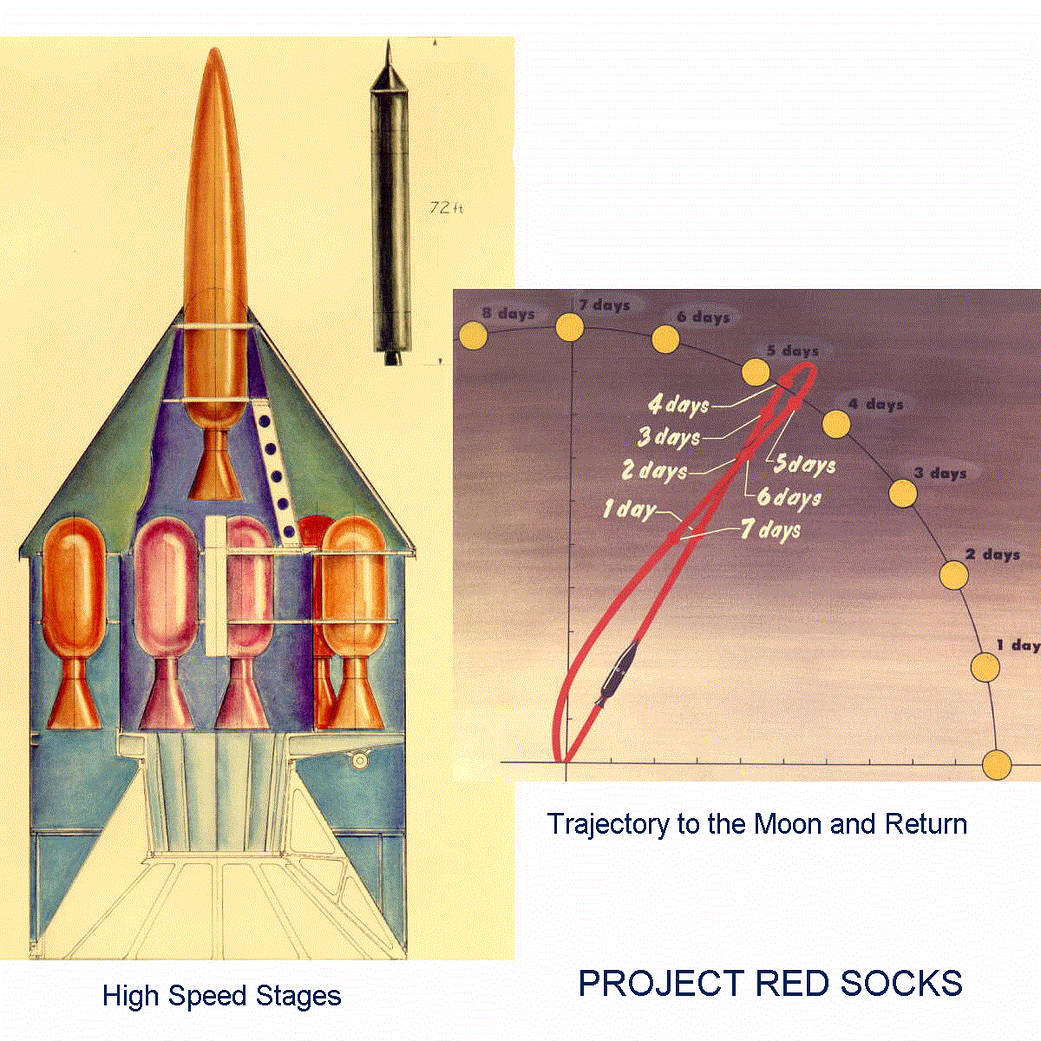
Project RED SOCKS was to be “the world’s first useful moon rocket,” proposed by the Jet Propulsion Laboratory/California Institute of Technology in October 1957. These artist’s renditions show the configuration of motors and a diagram of the moon orbit.
RED SOCKS was envisioned as a response to the Sputnik launch challenge with a significant technological advance over the then-Soviet Union instead of merely matching them with another earth-orbiting satellite. The objectives of the project were to “1) get photos, 2) refine space guidance techniques, and 3) impress the world” with a series of nine rocket flights to the moon. The second of the nine flights was to take pictures of the back of the moon. The necessary technology had already been developed for earlier projects, such as the Re-entry Test Vehicle and the Microlock radio ground tracking system. The project received little support. Instead, JPL and the Army Ballistic Missile Agency (ABMA) were instead asked to orbit an Earth satellite, culminating in the launch of Explorer 1 on Jan. 29, 1958. A modified RED SOCKS plan was carried out in the Pioneer 4 project in March 1959.Image credit: NASA/JPL























